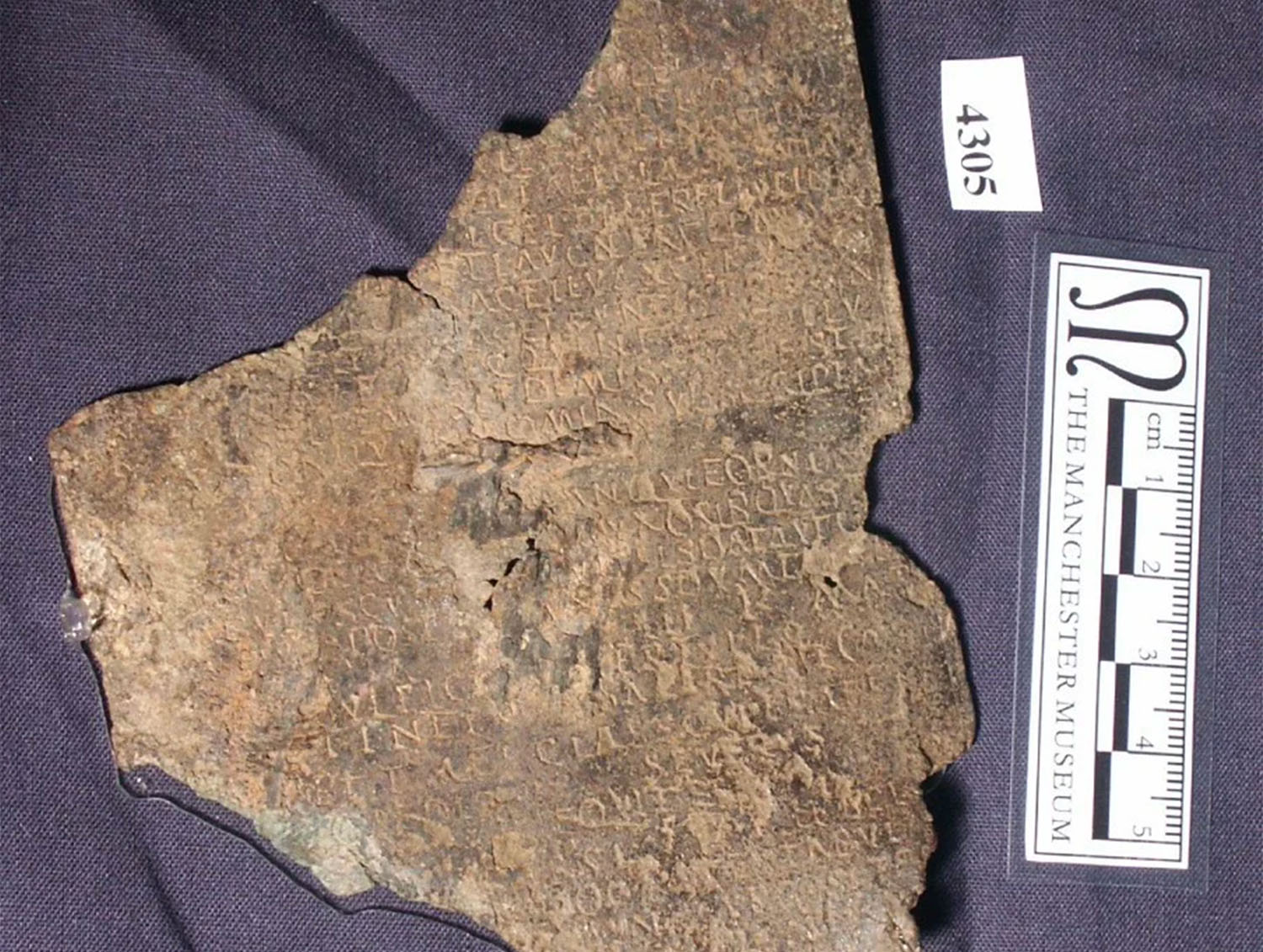
in 中文-普通话 / 国语 / Mandarin Chinese (simplified) translated by Zerui Zhu
This object has been translated into 5 different languages by 5 different users
这块青铜质奖牌(公元158年颁发)记述了其主人是一个来自叙利亚(Syria)1地区赫利奥波利斯2(Heliopolis,也被称为巴勒贝克Baalbek)的士兵。组成罗马帝国庞大军队的士兵们来自帝国的各个行省,作为奖励,服役满25年的士兵将会被授予帝国的公民身份3。授予公民身份的信息被镌刻在青铜板上。这块奖章的残片是被金属检测器所发现,虽然尚不知道这位士兵的名字,我们认为他加入了一个罗马军团并前去平定了犹太或是以色列地区的大规模叛乱(公元135-138年),并一定在退役后了留在了英格兰西北地区(所以我们才能在这里发现它)。
该奖牌在坎布里亚郡(Cambria)的瑞文格拉斯(Ravenglass)被发现,发现者为James Meadowcraft和Howard Meadowcraft,两人都于1996年获得了BP英国考古学大奖(BP British Archaeological Award)。
1. 叙利亚位于地中海东岸的西亚地区,是最为古老的文明发源地之一。历史上的叙利亚地区曾多次易主,而该奖牌颁发时该地区正属于罗马帝国(罗马共和国于公元前64年将其兼并为行省,直到公元637年的伊斯兰征服)。
2. Heliopolis一名来自希腊语,意味“太阳之城”(Baalbek则可能指“两条河的源头”),位于今天的黎巴嫩境内,是该国最重要的考古遗址之一,保留了大量罗马时代的遗址。
3. 古罗马时代,公民身份仅限于最初领土上的民族和他们的后代(尽管从共和国到帝国这个范围被不断扩大)。在公元前最后一个世纪,这个范围被扩大到今天的意大利地区。而公民身份意味着大量公民才享有的权利,从投票到贸易特权,这是罗马扩张后建立的行省上的本地人所不享有的。从罗马共和国晚期开始,为了缓解兵源不足,政治家和将军便开始放松这一限制,逐渐将公民权作为一种军事奖励来吸引广大行省的非公民人口。
Original text from: https://multilingualmuseum.wixsite.com/multilingualmuseum/multilingual-museum/award-of-roman-citizenship/award-of-roman-citizenship-original-english-language-text
Reference:
Wikipedia
A History of Western Society, 12th edn, by John P. McKay et al.
Do you have something you’d like to say, in your own language or English, about the object or translation? We’d like to hear what you think.
Translations are community-sourced and for anyone to participate in, however you use your language. For more information, see Community Guidelines.
19 Apr, 2023
These bronze tablets were used across the Roman Empire to record all elements of Roman Law. Another example is on display at the National Archeology Museum in Spain alongside the following description:
Discovered in Osuna, a town in Spain’s Seville province, this tablet is a record of the part of Roman law governing city life in the Roman city of Colonia Genua Iulia, named after the city’s founder, Julius Caesar.
The laws were enacted by Mark Anthony following Caesar’s death. However, the slabs actually date back to the times of the Flavian Dynasty in the second half of the 1st century AD. Around this time, some additions were made to the Lex Ursonensis, the city’s foundation charter. This text was originally made up of 142 sections, 73 of which have been uncovered with the discovery of these five tablets.
This type of legal tablet, used to write regulations into law on bronze for their long-term preservation, were displayed in public buildings. They became a crucial mode of communication, enabling the Romanisation of all the Empire’s cities under Roman law.
19 Apr, 2023
The original Spanish text reads:
Descubiertas en Osuna en 1870, estas tablas recogen parte de la ley que regulaba la vida municipal de esta ciudad romana llamada Colonia Genua Iulia, en honor de su fundador Julio César.
La ley fue promulgada por Marco Antonio, poco después de la muerte de César, pero estas piezas datan de época Flavia, segunda mitad del siglo I, fecha en la cual se intercalaron algunas anotaciones en la Lex Ursonensis. Este texto legal constaba originalmente de 142 capítulos de los que conservamos 73 distribuidos en cinco tablas.
Este tipo de tablas legales, donde la ley se fija por escrito en bronce, con el fin de que perduren mucho tiempo, eran expuestas para su lectura y conocimiento en edificios públicos, convirtiéndose en un medio de comunicación social primordial para conseguir la plena romanización de todas las ciudades del Imperio sujetas a Roma por el derecho latino.
You can read more here: http://ceres.mcu.es/pages/ResultSearch?Museo=MANT&txtSimpleSearch=Museo%20Espa%F1ol%20de%20Antig%FCedades.%20Tomo%20VIII.%20L%E1mina%202&simpleSearch=0&hipertextSearch=1&search=advancedSelection&MuseumsSearch=MANT|&MuseumsRolSearch=36&listaMuseos=[Museo%20Arqueol%F3gico%20Nacional%20(Colecci%F3n%20Tesoros%20del%20MAN)]